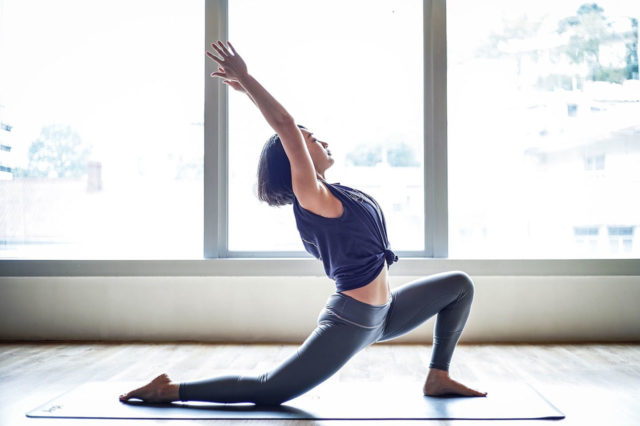Assuming you haven’t abandoned your exercise regime entirely in favour of standing in front of your freezer with the door open, A-list trainer Luke Worthington has some tips to take on board before attempting to work out in extreme heat.
Hydrate, hydrate, hydrate
“The obvious one, but one we often get wrong or take for granted,” says Luke. “Fluid intake whilst exercising is crucial for both performance but also for health. In normal conditions we should be consuming around 250ml for every 15 minutes of exercise (so, a 1 litre sports bottle during a one hour exercise class). If we’re working out in the heat then we should aim to double that.”
Another tip: “Don’t wait to feel thirsty before you drink water – our thirst response isn’t particularly sensitive, so by this time we’re already dehydrated,” Worthington points out. “Isotonic sports drinks have been shown to be more effective at rehydrating us than water alone, however, if you’re looking for a natural alternative then unsweetened coconut water has the same blend of minerals, and is just as effective as branded sports drinks.”
Don’t be fooled by the scales
“Scale weight lost during a workout is almost exclusively water (with a small amount accounted for by stored carbohydrates in our muscles). Losing body fat is a gradual process and doesn’t happen during an individual workout. If you notice a difference in scale weight after a workout this isn’t a sign of fat loss, it’s a sign of dehydration, which – if we don’t put it right – can lead to headaches, nausea and even fainting
Time it right
“We all know that sleeping during a heatwave can be a challenge, and with this in mind we should aim to get our workouts in earlier. A strenuous training session releases the stress hormone cortisol – which can make winding down a little harder – and compounded by the balmy nights this can make getting your restorative sleep a little more difficult,” Worthington explains. “By exercising first thing in the morning, we can actually use this to our advantage, as the hormonal responses can be somewhat similar to those that we experience from caffeine. Increased concentration, alertness, and energy levels – definitely a bonus.”
Dress for the occasion
“It can be tempting in hotter weather to wear as little as possible when you exercise,” Luke says. “However, most modern activewear is designed to wick moisture away from the skin, which actually keeps you much cooler than bare skin will.”
Refuel the right way
“Hot weather can diminish our appetite, but if we want to get the most from our workouts we need to be fuelling them adequately. In the hot weather this is more likely to mean having several smaller meals, rather than three larger ones. If I am taking this approach with my clients we’ll often use a couple of smoothies throughout the day, to make sure our nutritional bases are covered.” Try Luke’s morning smoothie recipe before your next early workout.
Luke’s morning smoothie
- 1 scoop of vanilla protein powder
- 1 handful of spinach leaves
- ½ an apple
- ¼ cup of uncooked oats
- ½ tbsp of sliced almonds
- ½ tbsp flax seeds
- Pinch of cinnamon
- ½ cup unsweetened almond milk
“Blended in a food processor, this gives us 30g of protein, 30g carbohydrate, 7g of fibre, and 7g of healthy fats – perfect pre-workout fuel,” Worthington says.
Consider short bursts of activity
“Exercise ‘snacking’ is a technique I adopt with clients who have particularly busy and hectic lifestyles, or for when they are travelling a lot,” Worthington explains. “If they can’t find the time to fit in a 45 minute workout, maybe they can find the time to fit in several smaller exercise ‘snacks’ of 7-10 minutes throughout the day.
“In this unusually hot weather, a longer workout may feel particularly daunting – especially activities like running, where we need to carry water – in which case chopping up the day’s activity in to several more digestible ‘snacks’ may be more comfortable and attainable. And, unless you’re in training for an endurance event, it is just as effective.
Don’t forget your skin
“Choose a sweat-resistant sunscreen – sunburn is no fun. If you’re exercising outdoors this is an absolute must, and re-applying frequently goes without saying.”
Editor
Kerry McDermottCredit
Lead image: courtesy Peter Bischoff/Getty Images


